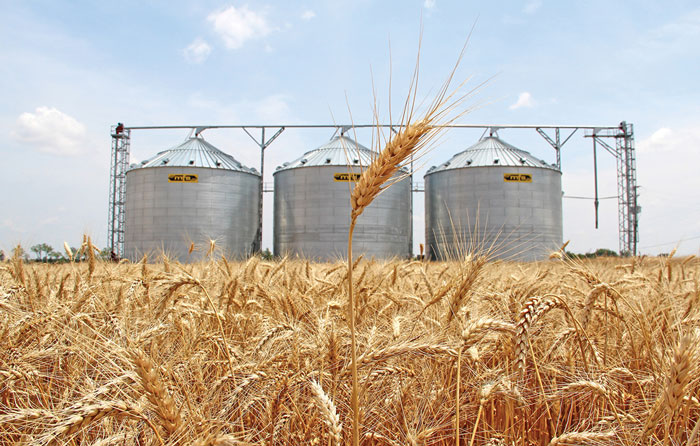April 7, 2016

At this writing, the KC July wheat contract price is $4.77. For harvest-delivered wheat, Oklahoma elevators are offering between minus 75 cents and minus 50 cents basis. Texas panhandle elevators are offering between minus 75 cents and minus 64 cents. At a minus 65 cents basis, the harvest forward contract cash price would be $4.12.
Assuming out-of-pocket wheat production costs are $160 per acre, the break-even yield per acre is about 39 bushels. The 39 bushels would have to grade U.S. # 2 or better, with zero discounts. Any lesser grade or quality would result in a discounted price.
Per acre production of 30 bushels would result in a $37 per acre loss ($4.12 x 9 bu.). Production of 45 bushels per acre would result in a $25 per acre return above variable costs. Per acre production is a major determinant of net return, and production practices influence yield.
Wheat quality less than U.S. # 2 will be discounted. Discounts that reflect quality and impact price are test weight (TW), dockage, moisture, foreign material (FM), and sprout damage.
Test weight discounts normally start at 59.9 pounds, and may be 1/2 cent at 59.9 pounds, 1 cent at 58.9 pounds, and an additional cent for each 1/2 pound up to 57.5 pounds. The TW discount is 10 cents at 55.9 pounds, 15 cents at 54.9 pounds, and 36 cents at 51.4 pounds. Below 51 pounds, the discount increases 3 cents for each 1/2 pound.
DOCKAGE DISCOUNTS
Dockage is all non-wheat material that is easily removed with screens and an aspirator. All dockage is subtracted from weight. A discount (cleaning fee) may be also be applied.
Dockage discounts tend to start at 1.1 percent. From 1.1 to 1.2 percent dockage, the discount is 5 cents, 1.3 percent to 1.5 percent is 7 cents, and 1.6 to 2.0 percent is 9 cents. The discount increases to 14 cents at 2.6 percent. For loads with dockage greater than 3.0 percent, the discount is 14 cents plus 2 cents for each 1/2 percent.
Foreign material (FM) is non-wheat material that cannot be easily removed with screens and/or aspirators. FM is materials (such as rye and oats) that are about the same size and weight as wheat kernels.
The FM discount starts at 1/2 percent. For 0.5 to 0.7 percent FM, the discount is 2 cents. The discount is 6 cents for FM between 0.8 and 1.0 percent. From 1.1 to 1.3 percent, the discount is 12 cents, and it increases in 6 cent increments for each 1/2 percent up to 3.0 percent. At 3.1 percent, the discount is 50 cents, and it increases to $1 at 8.1 percent. With FM over 10 percent, the load is designated “mixed grain” and is no longer classified as wheat.
For the latest on southwest agriculture, please check out Southwest Farm Press Daily and receive the latest news right to your inbox.
Discounts are applied for moisture (greater than 13.6 percent), shrunken and broken kernels (3.1 percent or more), sprout damage (15 cents for each 1 percent greater than 2.0 percent up to 8.0 percent), and insect damaged kernels.
As an example, let’s use a load of wheat that is 57.4 test weight, has 1.3 percent dockage, and has 0.8 percent foreign material. If the posted price is $4.12, the received price will be $3.95. The test weight discount would be 4 cents, the dockage discount 7 cents, and the foreign material discount 8 cents, for a total 17 cents discount.
The local price is important. But producers can do little about the local price. Their production decisions do help determine bushels produced and reduce the discounts applied.
About the Author(s)
You May Also Like






